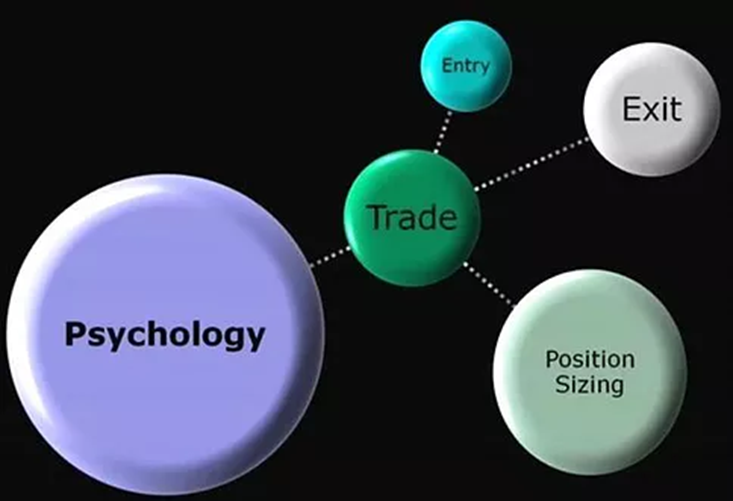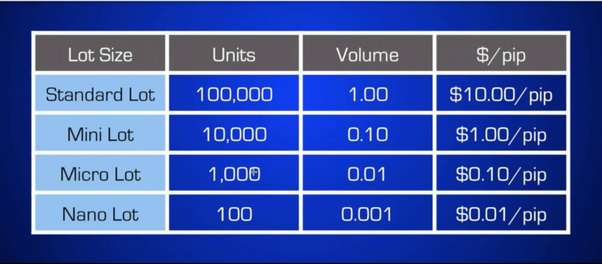Best Position Sizing Strategies and Risk Management
Get to grips with long positions, short positions, and how to establish a position size that is commensurate with potential opportunities and your own tolerance for losses.
Written by Aaron Akwu, Head of Education Hantec Markets
Position sizing is a crucial aspect of forex trading that plays a significant role in managing risk and optimizing potential returns. It refers to the process of determining the optimal amount of units or lots to trade in a particular currency pair based on various factors such as trading capital, risk tolerance, and market conditions.
Proper position sizing involves finding the right balance between allocating a sufficient portion of your trading capital to capitalize on potential profits while minimizing the risk of significant losses. By implementing effective position sizing strategies, traders can protect their capital, enhance their trading performance, and maintain consistency in their overall trading approach.
To illustrate the concept of position sizing, let’s consider an example. Imagine a forex trader with a trading capital of $10,000 who decides to risk 2% of their capital on a single trade. In this case, the trade risk is defined as 2% of $10,000, which amounts to $200.
Now, let’s assume that the trader wants to go long on a currency pair, let’s say EUR/USD, which is currently trading at 1.2000. After conducting technical and fundamental analysis, the trader identifies a potential entry point at 1.1950 with a stop-loss level at 1.1900.
To calculate the appropriate position size, the trader needs to consider the trade risk and the difference between the entry price and the stop-loss level. In this example, the difference is 50 pips (1.1950 – 1.1900). Since the trader is willing to risk $200 on this trade, he/she has to use an appropriate lot size to achieve that.
By adhering to proper position sizing, the trader ensures that they are risking a predetermined amount of their trading capital on each trade. This approach helps them maintain consistency in their risk management and prevents them from exposing too much capital to a single trade.

Lot Size in Position sizing
Understanding the different types of lot sizes is crucial for managing risk and determining position sizes within a trading account. In this context, experienced traders carefully consider their trading strategy and risk tolerance to choose the most appropriate lot size for their trades.
There are three primary types of lot sizes commonly used in forex trading: standard lots, mini lots, and micro-lots. Let’s explore each of them with an example to better understand their significance:
Standard Lot Size:A standard lot is the largest lot size in forex trading and typically represents 100,000 units of the base currency. For the GBP/USD pair, where the GBP is the base currency, a standard lot would be equivalent to 100,000 British pounds. If the current exchange rate for GBP/USD is 1.4000, a trader executing a standard lot trade in this pair would be controlling $140,000 (100,000 x 1.4000) worth of US dollars.
Example: Trader A decides to buy one standard lot of GBP/USD at an exchange rate of 1.4000. The trader’s position size is 100,000 GBP, equivalent to $140,000 in USD.
Mini Lot Size:A mini lot is one-tenth the size of a standard lot and represents 10,000 units of the base currency. Therefore, in the case of GBP/USD, a mini lot would be equivalent to 10,000 British pounds. Using the same exchange rate of 1.4000, a trader executing a mini lot trade in this pair would be controlling $14,000 (10,000 x 1.4000) worth of US dollars.
Example:Trader B decides to buy three mini lots of GBP/USD at an exchange rate of 1.4000. The trader’s position size is 30,000 GBP, equivalent to $42,000 in USD.
Micro Lot Size:A micro lot is one-tenth the size of a mini lot and represents 1,000 units of the base currency. Therefore, in the case of GBP/USD, a micro lot would be equivalent to 1,000 British pounds. Using the same exchange rate of 1.4000, a trader executing a micro lot trade in this pair would be controlling $1,400 (1,000 x 1.4000) worth of US dollars.
Example: Trader C decides to sell five micro lots of GBP/USD at an exchange rate of 1.4000. The trader’s position size is 5,000 GBP, equivalent to $7,000 in USD.
It’s important to note that the value of each pip (price increment) may vary depending on the lot size. In general, for the GBP/USD pair, a standard lot has a pip value of approximately $10, a mini lot has a pip value of around $1, and a micro lot has a pip value of roughly $0.10. These values may fluctuate based on currency exchange rates and the specific broker used for trading.

Importance of position sizing to traders'
The importance of position sizing in forex trading cannot be overstated. Properly managing your position size is crucial for achieving long-term success and mitigating potential risks. Here are the key points highlighting the significance of position sizing:
- Minimizing Risk: Position sizing allows traders to control the amount of risk they are exposed to in each trade. By determining a fixed percentage of your trading capital to risk on each trade, you can ensure that no single trade has the potential to significantly impact your overall portfolio. This approach helps protect your capital and prevents catastrophic losses.
- Consistency in Risk Management: Position sizing provides a systematic approach to risk management. Rather than randomly allocating varying amounts of capital to different trades, a fixed percentage approach ensures consistency. It allows you to assess how much risk you are willing to take and apply the same risk management principles to all your trades.
- Protecting Against Market Volatility: Trading in the forex market involves inherent volatility. Position sizing plays a vital role in safeguarding your trading account from unexpected market movements. By considering how much risk you are comfortable with, you can adjust your position size accordingly to account for potential market fluctuations.
- Maximizing Profit Potential: Optimal position sizing can also enhance your profit potential. By carefully managing the size of your positions, you can ensure that your trades have the opportunity to generate meaningful returns. Finding the right balance between risk and reward is crucial for long-term profitability.
- Comparable to Trading Stocks: Position sizing in forex trading is similar to managing positions in stocks or other financial instruments. It involves determining the appropriate amount of capital to allocate to each trade, taking into account factors such as account size, risk tolerance, and market conditions. Applying proven position sizing techniques from stock trading can be beneficial in the forex market as well.
How to determine position size as a trader
When it comes to position sizing techniques in forex markets, there are several approaches you can consider, each with its own benefits and considerations. Let’s explore some of the commonly used techniques:
- Fixed Dollar Value:
One approach to position sizing is using a fixed dollar value. This technique involves determining a specific amount of money you are willing to risk on each trade. By allocating a predetermined sum, you can calculate the position size based on the stop loss level and the maximum amount you are willing to lose. For example, if you have a maximum risk of $500 per trade and your stop loss is 50 pips, you can calculate the position size to ensure that a 50-pip move will result in a maximum loss of $500. This method allows for consistency in risk management and provides a clear understanding of your maximum risk.
- Fixed Percentage Risk per Trade:
Another popular technique is using a fixed percentage risk per trade. With this approach, you determine a percentage of your trading capital that you are willing to risk on each trade. For instance, if you decide to risk 2% of your trading capital on a single trade, you can calculate the position size based on your stop loss distance and the percentage risk. This method ensures that your position size adjusts proportionally to the size of your trading account, helping you maintain consistent risk management regardless of the trade’s specifics.
- Contract Size Value:
Position sizing can also be based on the contract size value. In forex, different currency pairs have varying contract sizes, which represent the amount of the base currency being traded. By considering the contract size, you can calculate the position size based on the desired risk per trade. For example, if you want to risk $1,000 on a trade and the contract size for the currency pair you are trading is 100,000 units, you can calculate the appropriate position size to achieve your desired risk level. This technique allows for flexibility across different currency pairs and their respective contract sizes.
- Leverage:
Leverage is an important aspect of forex trading and can impact your position sizing. It refers to borrowing funds from your broker to amplify the size of your trades. While leverage can enhance potential profits, it also increases risk. When incorporating leverage into your position sizing strategy, it’s crucial to consider the maximum leverage available and your risk tolerance. By adjusting the position size based on the leverage used, you can safely manage your risk and avoid excessive exposure.

- Kelly Criterion:
The Kelly criterion is a position-sizing technique that considers the probability of success and the risk-reward ratio of each trade. It provides a mathematical formula to calculate the optimal position size based on these factors. The formula takes into account the expected return of the trade and the probability of winning, allowing you to maximize your long-term growth. However, it’s worth noting that the Kelly criterion can sometimes suggest larger position sizes than what many traders are comfortable with. Therefore, it is often wise to apply a fractional Kelly approach to reduce the maximum risk exposure.
Kelly % = W – [(1-W)/R]
Where K is a percentage of the bettor’s bankroll, W is the probability of a favorable return, and R is the ratio of average wins to average losses.
How to calculate position size
Calculating position size in the forex market is an essential aspect of risk management and can greatly impact your trading success. Determining the appropriate position size allows you to control your risk exposure and optimize potential gains. Let’s explore how to calculate position size in the forex market, while incorporating the phrase “random position size” into the content.
Position size is typically calculated based on three main factors: account balance, risk percentage, and the distance between the entry price and the stop-loss level. The risk percentage is a personal decision that reflects the maximum amount of capital you are willing to risk on a single trade. Let’s say you decide to risk 2% of your account balance per trade.
To calculate the position size, you can use the following formula:
Position Size = (Account Balance * Risk Percentage) / (Distance to Stop Loss* Pip Value)
Let’s consider an example to illustrate this concept. Suppose your account balance is $10,000, and you’re willing to risk 2% ($200) on this trade. You decide to buy the EUR/USD currency pair at 1.2000 and set your stop loss at 1.1950, resulting in a distance of 50 pips.
To calculate the pip value, you need to know the pip size of the currency pair you are trading. Let’s assume the pip value for the EUR/USD pair is $10 for a standard lot (100,000 units).
Using the formula, the position size would be:
Position Size = ($10,000 * 0.02) / (50 * $10)
Position Size = $200 / $500
Position Size = 0.4 standard lots
In this example, the appropriate position size for this trade would be 0.4 standard lots, incorporating the phrase “random position size.”
It’s important to note that position size calculations may vary depending on your risk tolerance and trading strategy. Additionally, different brokers may have specific lot sizes or leverage options, so be sure to adapt the formula accordingly.
By calculating your position size based on your risk tolerance and the distance to your stop-loss level, you can effectively manage your risk exposure in the forex market. This allows you to maintain consistency in your trading approach and better protect your capital while striving for profitable trades.
How to reduce risk using position sizing strategies?
Position sizing involves determining the appropriate amount of risk you are willing to take on each trade based on your account size, risk tolerance, and the specific characteristics of the trade.
To implement position sizing safely, you need to consider the following factors:
- Account Size: Assess your total account size and decide how much of it you are comfortable risking on a single trade. It is generally recommended to risk only a small percentage of your account, such as 1-2%, to safeguard against substantial losses.
- Stop Loss Placement: Determine the placement of your stop loss order, which is a predetermined level at which you will exit the trade if it moves against you. A well-placed stop loss can limit your potential losses and help you maintain a safe risk profile.
- Volatility and Currency Pair: Consider the volatility of the currency pair you are trading. More volatile pairs require a smaller position size to maintain a safe level of risk. Evaluate historical price movements, average true range, and other volatility indicators to make an informed decision.
- Risk-Reward Ratio: Evaluate the potential risk-reward ratio of each trade. A higher ratio means you are potentially risking less for a greater reward. Aim for trades with favourable risk-reward profiles to increase your chances of profitability while keeping risk in check.
- Trade Frequency: Determine how many trades you plan to take simultaneously or within a certain time frame. If you are trading multiple positions concurrently, adjust the position size for each trade to ensure your overall risk exposure remains within your predetermined safe limits.




